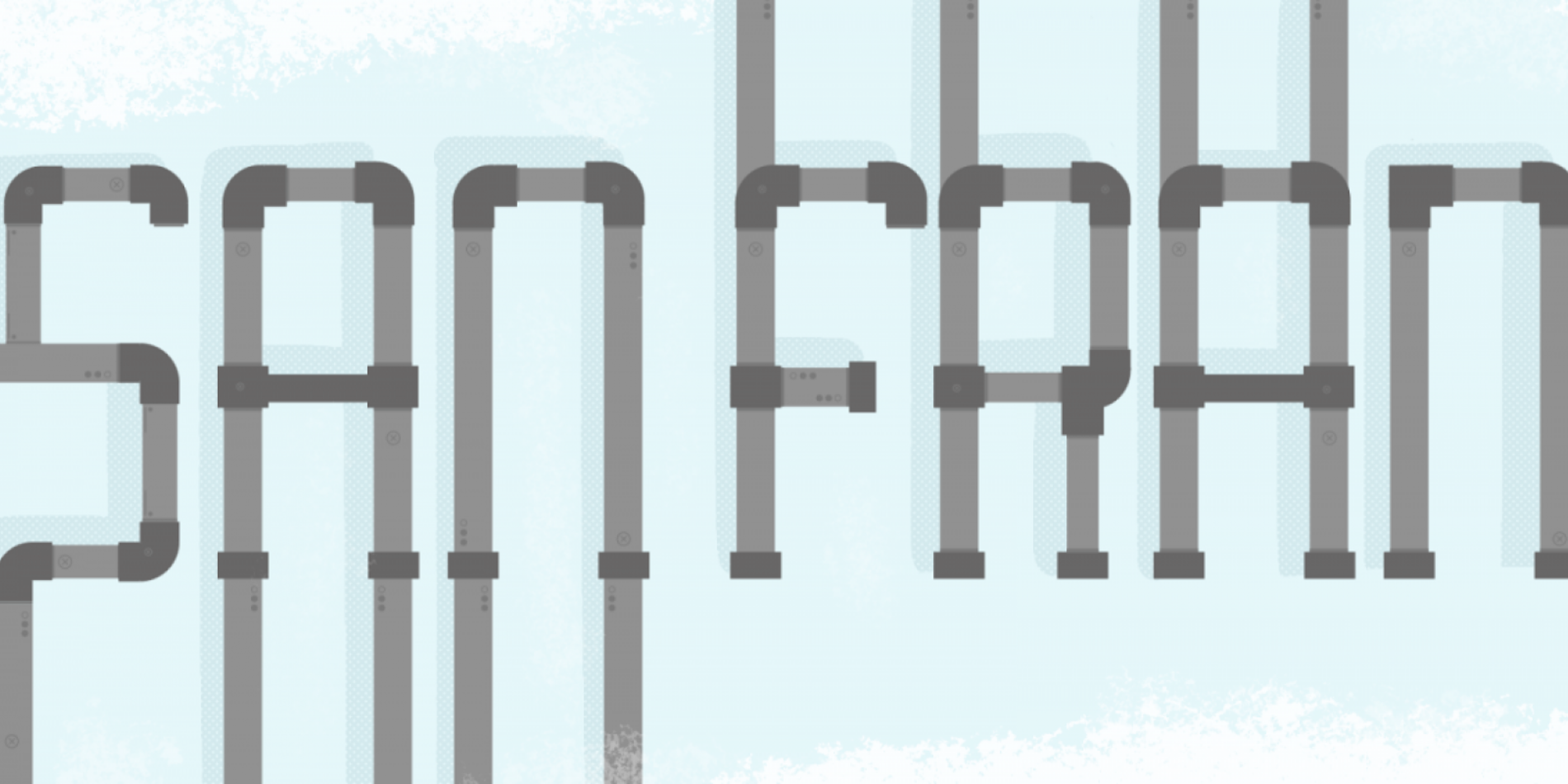A risk assessment of San Francisco’s fire-fighting water system
Using San Francisco’s emergency water system as a test case, a team of civil engineers at Stanford has developed a new approach toward assessing risk and assigning resources to shore up a city’s lifeline infrastructure against earthquakes.
The challenge facing the San Francisco Public Utilities Commission was how best to strengthen a special network of fire-fighting pipes that the city had built after the epic quake of 1906, when 80% of the destruction stemmed from fires that blazed out of control. This auxiliary water network, built just for fire-fighters, was designed to function even if an earthquake knocked out power to pumping stations.
But now, looking at nearly 100 miles of century-old pipes, city officials wondered which most urgently needed attention. Should they prioritize the oldest pipes or the biggest ones? Should retrofits target pipes considered most at risk of failing, or those that would unleash the biggest dangers if they failed?
To help set priorities, city officials enlisted Jack Baker, an associate professor of civil and environmental engineering at Stanford who specializes in earthquake preparedness. Baker teamed up with Jason Wu, a Stanford doctoral candidate in civil engineering.
Baker and Wu came up a way to analyze a wide range of possible risks – 90 different earthquake scenarios – and then to identify a relatively small number of pipes that posed the biggest and most likely dangers if they failed.
“Up to that point, the baseline approach for assessing risk was to look at a single scenario, such as a major quake along the San Andreas fault,” Baker says.
“Our message was that that this scenario may not be the earthquake you actually see,” he adds. “Smaller earthquakes are more likely and of concern, or there could even be a larger earthquake. If you try to plow through all the different permutations, you’ll be running computer simulations until the end of time. But if you simplify the problem too much, you can miss many of the important risks.”
Advancing the state of the art
Earthquakes can be powerful or weak. Their epicenters can be near the city or far away. Shock waves can travel from different directions, which affects their impact on particular locations. Figuring out pipeline risks can be just as perplexing. Which pipes are most likely to break, and what happens if they do?
Civil engineers had already developed sophisticated software to model the ground motions that a particular earthquake will radiate through a particular city. Likewise, the Environmental Protection Agency has developed a respected system to model water flows when particular pipes fail.
For planning purposes, however, none of these prior efforts eliminated the guessing game. So Baker and Wu looked for a more systematic way to assess the risks. They began by running computer simulations for 90 different earthquakes in and around San Francisco. Each simulation produced block-by-block estimates of how the tremors would shake the city. Next, they came up with four or five estimates of the pipe damage that each scenario could cause, and what would happen to water flows as a result. Their models were exceedingly complex. They did not merely assess the risk and consequences of a particular pipe failure. Their model looked at the risk of the correlated failures of connected pipes.
The key innovation, says Baker, was to translate all the possibilities into a useful guide for setting priorities. The researchers did this by identifying which pipes failed in multiple earthquake scenarios and contributed to calamitous losses of water in one or more neighborhoods. If a pipe turned out to repeatedly be a villain in numerous simulations, the researchers flagged it for consideration as a high priority.
Questioning their multiple-villain approach
The results didn’t always match the conventional wisdom. Some of the priority pipes seemed at first blush to be small and unimportant.
“The challenge is that earthquakes don’t happen often enough for us to simply learn from past experience, and infrastructure systems are too complex to understand intuitively,” Baker says.
Looking for a way to test their strategy, Baker and Wu ran another series of simulations. They compared their retrofit strategy to the results of simulations based on 15 more conventional approaches, such as putting top priority on the oldest or biggest pipes. Their multiple-villain approach produced the best results.
Baker says the San Francisco project can shed light on disaster preparation in general and provide a template for planners who want to fortify critical services against all sorts of natural calamities. From earthquakes to hurricanes to tornadoes, no two disasters are alike. Likewise there are different variables to how electric grids and other critical networks will hold up. While these differences matter, the basic approach – modeling a number of scenarios and identifying the weakest links in multiple scenarios – should provide the most educated guess as to how best to save lives and protect property.
“It is feasible to predict what could happen in the future, and to use that knowledge to prepare and efficiently limit the impacts of future disasters,” Baker says. “This project shows that engineering risk analysis, combined with scientific understanding of earthquakes and other disasters, provides a path forward.”




